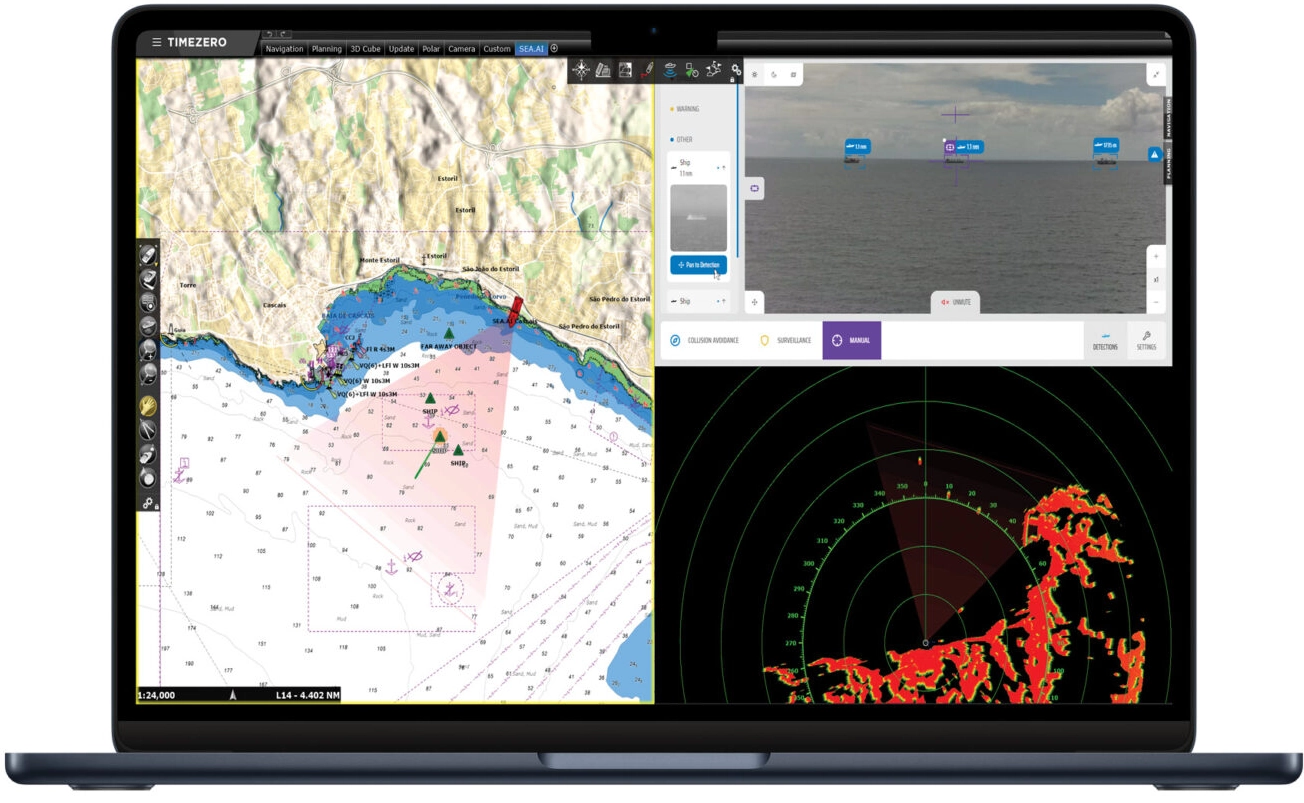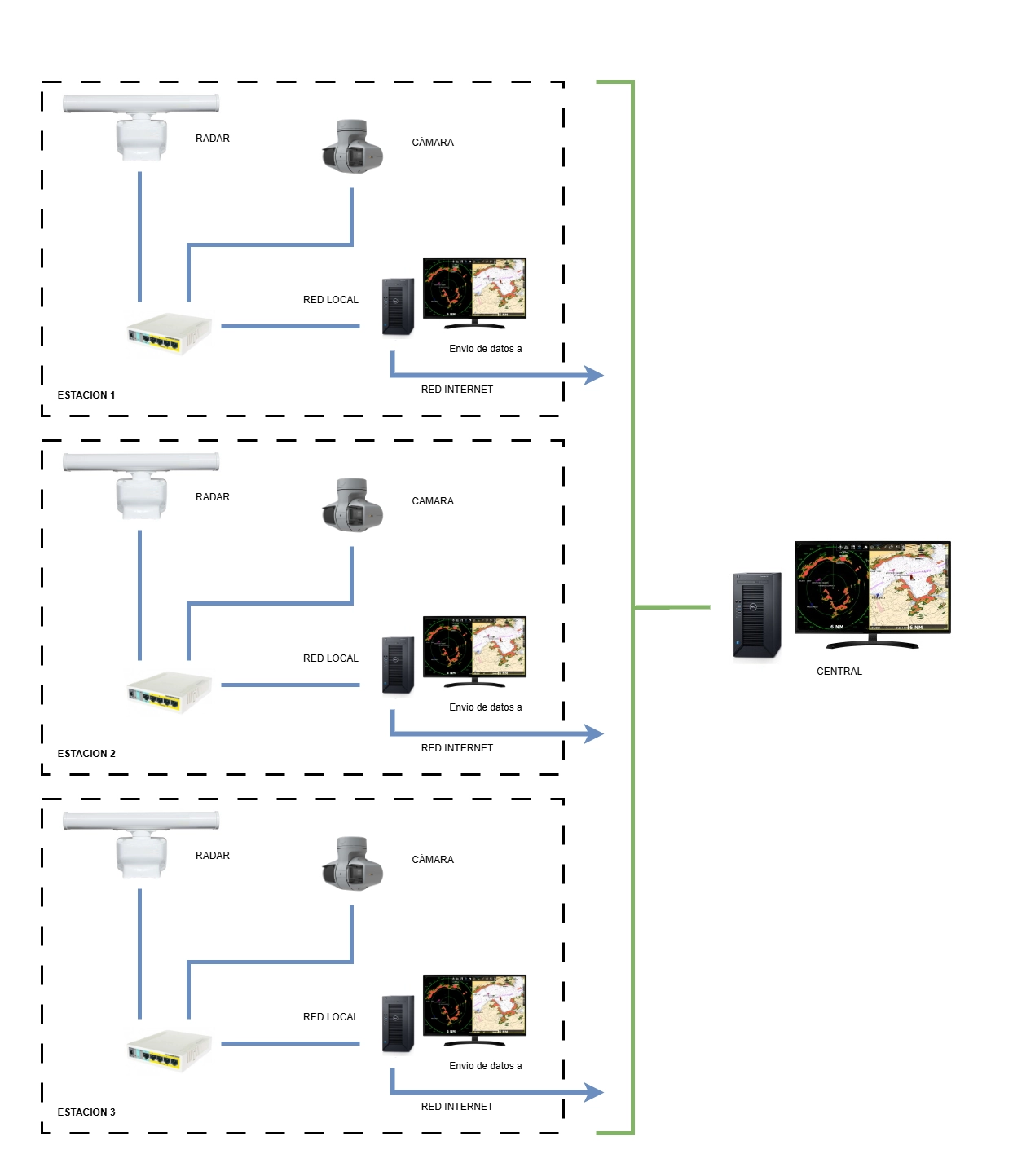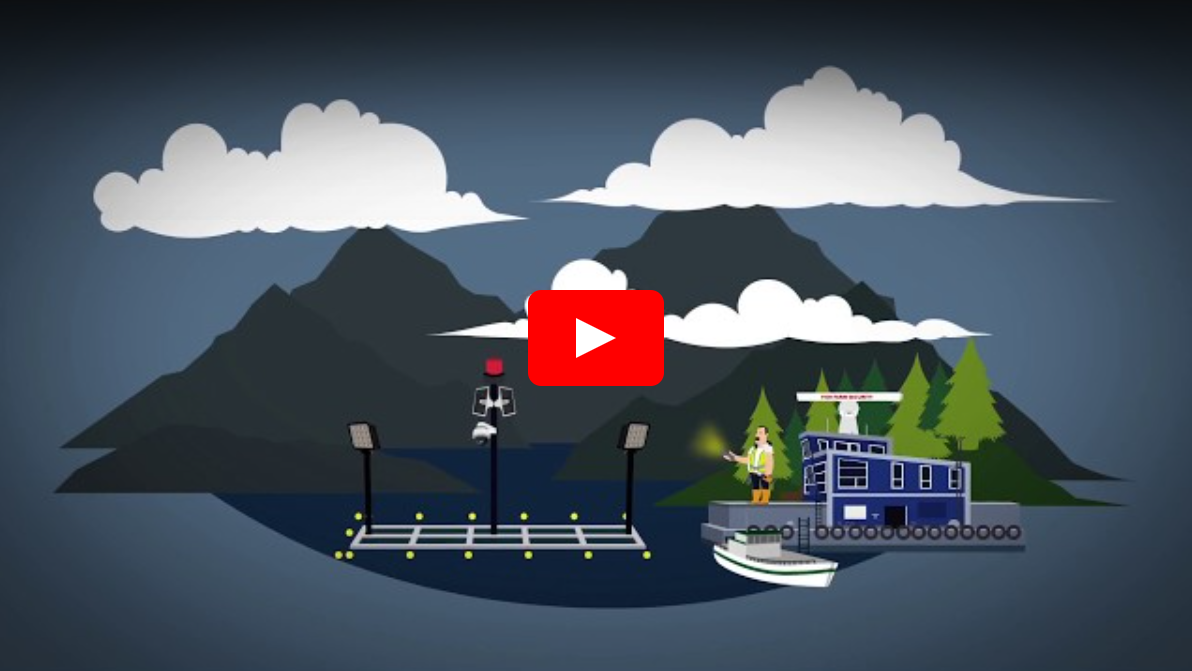The surveillance system aims to monitor all vessels that transit through the areas where the FISH FARMS are located. This monitoring is carried out from a strategically located control booth or from the pontoon and requires an operator with minimal computer knowledge. The system is controlled by software in which security perimeters are delimited by GPS coordinates. These perimeters are unlimited and serve to control only the area of the modules in the fish farms as well as to control all vessel traffic in the fish farm area.
Our system is a cost-effective solution, providing a simple-to-operate and user-friendly platform. Behind it lies a robust system packed with extensive functionality, providing security and deterrence like no other. The devices connected to the system function as a true ecosystem, interacting with each other and automating processes, avoiding distractions and human error in security processes.
Advanced security rules are configured in the software, allowing customization of virtually all of its functions to meet all needs.
The radar is overlayed on the chart, providing a clear view and geographic location of targets of interest. With the new smart radar functions, echoes detected as land change color or can be completely eliminated, allowing only targets that may pose a threat to be seen on the screen.
The system is capable of controlling up to 12 security cameras, connected wired or wirelessly, with the options of activating the camera closest to the event, activating a specific camera selected in the settings and manually activarion of the camera.
Once the camera is activated, it can automatically lock onto the target or track it until it leaves the control area. Daytime cameras, IR night vision cameras and thermal cameras can be combined depending on the scenario.
With direct integration into a dual thermal camera (day/night and thermal) with artificial intelligence, the data is analyzed and classified, delivering what is detected directly to the radar, functioning as a radar assistant.
Integration with IA cameras
An AI-powered thermal imaging assistant for radar.
With a permanent 360° rotation, the camera constantly scans the area with its two thermal cameras and two RGB cameras to ensure no detail is missed and to provide timely data to the radar when the situation warrants it.

The functions of the integration in version 3 are unique, the camera with artificial intelligence does not depend on radar echoes to track targets, constantly rotating 360 degrees like the radar, it is capable of detecting and processing targets by itself, it becomes a radar assistant alerting, classifying and delivering targets to the radar which transforms them into an ARPA target to monitor them and trigger security rules previously configured in the system, the camera or cameras operate independently and communicate when something suspicious is detected according to their parameters, delivering information to the control software in real time, through these rules the system is capable of taking control of the camera for automatic tracking and alerting with sound and remote email notifications when connected to the internet.

Top-performance camera with a combination of 4 high-definition cameras including 1 thermal + 1 RGB with a wide field of view for close-range object recognition and 1 thermal + 1 RGB with a narrow field of view for superior long-range object recognition and 360° panoramic view, it offers various intelligent security functions.

Control center
Centralized solution for surveillance
Through the control center, the security stations and cameras connected to the Internet can be completely unattended, controlled, monitored, and stored by a remote station that receives all information through a private client/server architecture, ensuring secure data transfer.
The V3 security system (installed in fish farms) that is locally connected to a variety of sensors such as radar, cameras, self-identification devices, weather stations, among others, can act as a server and send the information from these sensors to a remote computer loaded with Control Center software that acts as a client, in this computer (client) the information is processed and presents all the fish farms connected to it on the same map allowing to visualize all the information and complete control of them and their connected sensors, in turn, it stores all the generated information and alarms from the connected stations from 30 days to months depending on the storage capacity, the storage of this information can include radio communication between the control center and the stations, thus generating cross-information to close the security circle.
Communication between the fish farms and the control center is through a private client/server platform. This provides great security for the information since in order to receive and view information from the stations, it is necessary to have a control center software that must be internally connected to the fish farms, thus eliminating the security problems of having a solution where you can enter and view information only having a username and password on a public network.




